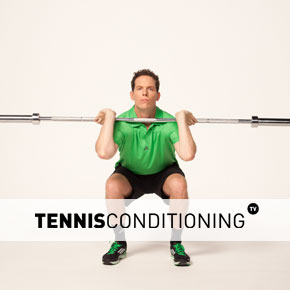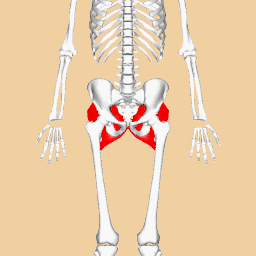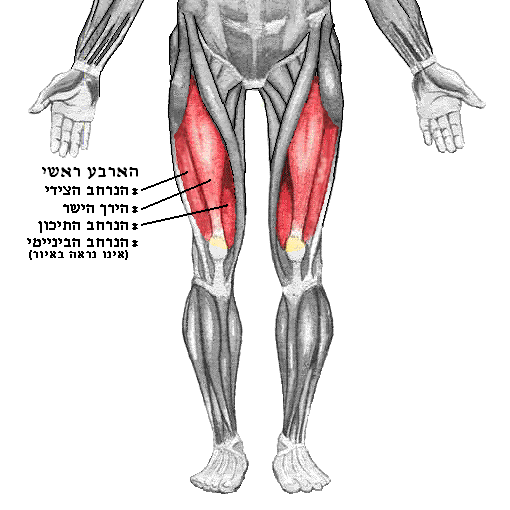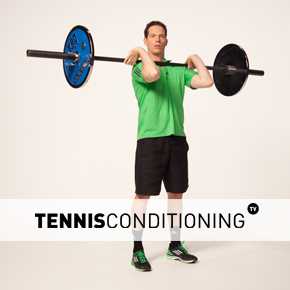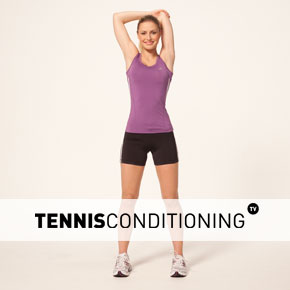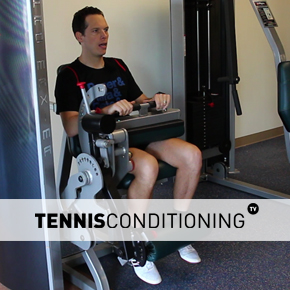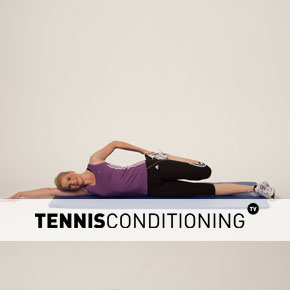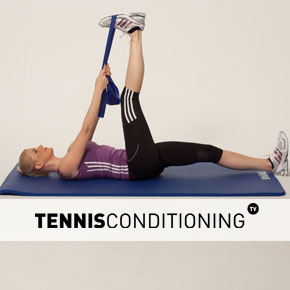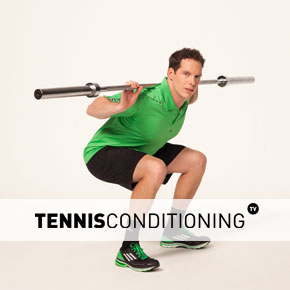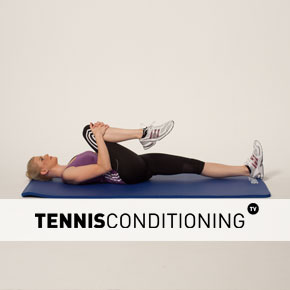The front squat is a compound resistance training exercise to strengthen the knee- and hip extensors and prepare the athlete for more complex movements during Olympic lifts.
Because the front squat is a compound exercise activating numerous muscle groups simultaneously, it improves neuromuscular system efficiency.
In addition the front squat improves body control and flexibility and grants a skill & balance foundation for more complex movements, such as the Hang Clean to High Receive.
Because the front squat has many benefits and is essential during the Olympic lifts, you should include this exercise into your workout program during the early training phases (e.g. hypertrophy and strength phase) so that you can transition easily into the more complex exercises and become a powerful athlete.
Front Squat Progression
If you use additional weights…make sure you use appropriate resistance so you can control the action throughout the entire range of motion. Otherwise you defeat the purpose of the exercise.
Very often, people use too much resistance and they become sloppy. Especially when it comes to maintaining core stability.
Also, don’t just progress with adding more weight. First, maximize the speed while maintaining perfect form.
Here are the progression levels:
- Beginner: look down during the action
- Advanced: look forward during the action
- Professional: alternating one leg action only
Front Squat Description
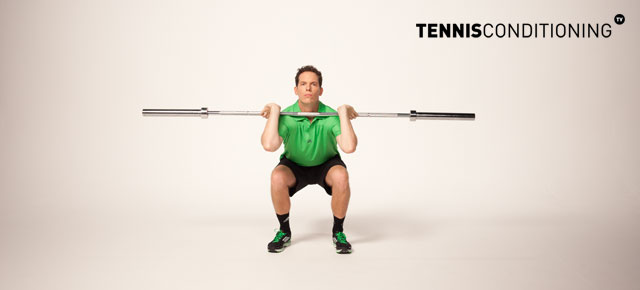
Stance: Feet are shoulder-width apart, toes pointing outwards 10 – 20˚
Grip: Handover grip, palms facing down; hands are just outside shoulders
- From a rack, place barbell so that barbell is centered and lying on top of the chest while hands grip the bar outside the shoulders, elbows facing forward horizontally to stabilize.
- Bend knees to 90˚, lean butt back, and maintain knees inside the shoulders (knees should point same direction as feet throughout movement).
- Keep back straight by keeping the head up, pushing chest out and shoulder blades back.
- Now, keep the weight on the heels and push gradually vertical through the heels by extending knees and hips until legs are straight.
Note: If the athlete has flexibility issues and/ or for teaching purposes, a stance wider than shoulder-width is warranted.
Front Squat Targeted Musculature
- Quadriceps
- Hamstring
- Gluteals
Training Zone
In this section we provide you with some exercises you can use to optimize your training. The exercises have been grouped and selected based on the major muscle group(s) they target – the prime movers.
The first exercise is a dynamic warm up to increase muscle tissue temperature to prepare you for your workout – for more info take a look at the benefits of a proper warm up routine.
The second exercise is a free-weight resistance training exercise to strengthen the respective prime movers and improve neuromuscular system efficiency. Why? Find out more about the purpose of weightlifting for tennis players.
The third exercise is a static stretching exercise you can do following your workout as a cool down to improve flexibility and reduce muscle soreness – here is more information on the benefits of static stretching.
Triceps Flexibility
- 2 Racquet Serves
- Hang Clean
- Overhead Triceps Stretch

